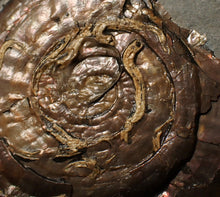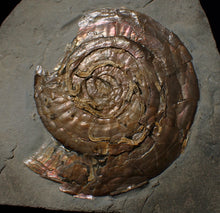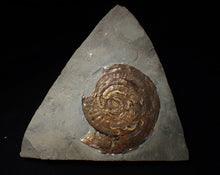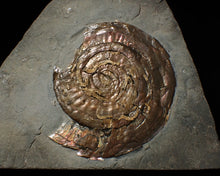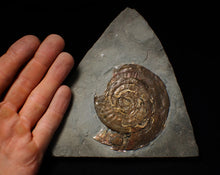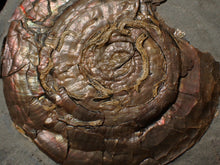
A stunning example of an iridescent ammonite fossil of the species Psiloceras planorbis from North Somerset, UK.
The piece of limestone matrix measures 95 mm (6.8 inches) across and contains one complete ammonite, which measures 82 mm (3.3 inches), which is large for this species. The ammonite is very well preserved and has been prepared out of the rock to reveal the shell, which displays some subtle iridescent colours that change depending on the angle that the fossil is viewed at with a nice copper sheen. This one is unusual as it also has several bivalve shells and serpulid worm tubes/casts that encrusted the ammonite after it died and lay resting on the Jurassic seafloor. The detail in the worm casts is fantastic and you can even see the openings where the worms would have extended their feeding parts out of the shell. The fossil weighs 450 grams and has a cut flat base to allow it to stand freely for display.
Around 200 million years old (Hettangian, Early Jurassic), this fossil would make a wonderful addition to any collection.







